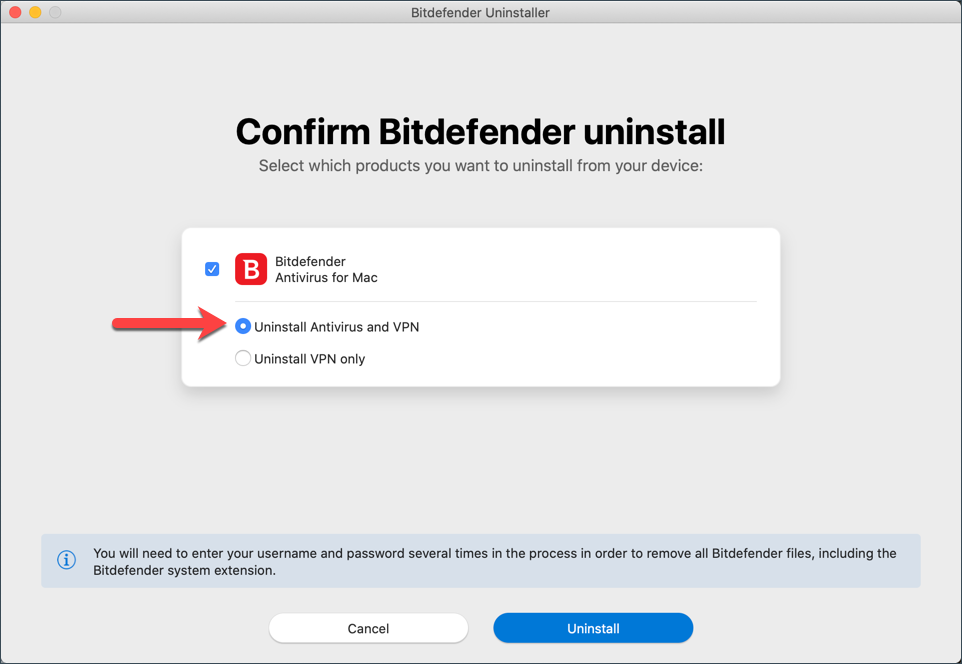

- UNINSTALL BITDEFENDER FOR MAC HOW TO
- UNINSTALL BITDEFENDER FOR MAC FOR MAC
- UNINSTALL BITDEFENDER FOR MAC INSTALL

UNINSTALL BITDEFENDER FOR MAC INSTALL
So if you still have the installation package, you can launch the installer, and choose the Uninstall in the Install Check part, to run the Bitdefender Uninstaller.
:max_bytes(150000):strip_icc()/bitdefenderuninstallsite-6cf1082e16804fcaa11e86c8fe4740c8.jpg)
As we have tested, Bitdefender Antivirus has a built-in uninstaller, so the first thing is to locate and run this tool. Typically, an antivirus/security software come with a dedicated uninstall tool that helps remove the app itself from the whole system.
UNINSTALL BITDEFENDER FOR MAC HOW TO
How to properly remove Bitdefender Antivirus for Mac? Given the situation, some users may get lost and don’t know how to properly uninstall Bitdefender Antivirus for Mac. That means you will not be able to perform the standard uninstallation by dragging the app icon to the Trash and emptying the Trash, as the item you trash is only an alias. Besides, you may find that the Bitdefender Antivirus appearing in the /Applications folder is just an alias which allows you to open up the app, rather than an application bundle.
/uninstallbitdefender-362ddcfcf47e47a8be84b5d67101325d.jpg)
Users cannot quit this app even via the Activity Monitor. Once installed, Bitdefender Antivirus launches automatically and keeps running on the background. Why does Bitdefender Antivirus so difficult to uninstall?
UNINSTALL BITDEFENDER FOR MAC FOR MAC
In this post we will discuss how to effectively remove Bitdefender Antivirus for Mac by multiple ways. To install an antivirus may take a few seconds to complete, yet when you try to uninstall the older version, or switch from another security solution, you may find it tough to totally get rid of the current software. With the increase of hacking activities targeting on Mac system, many Mac users choose to install an antivirus/security software on their devices to protect against viruses, phishing threats and malware.


 0 kommentar(er)
0 kommentar(er)
